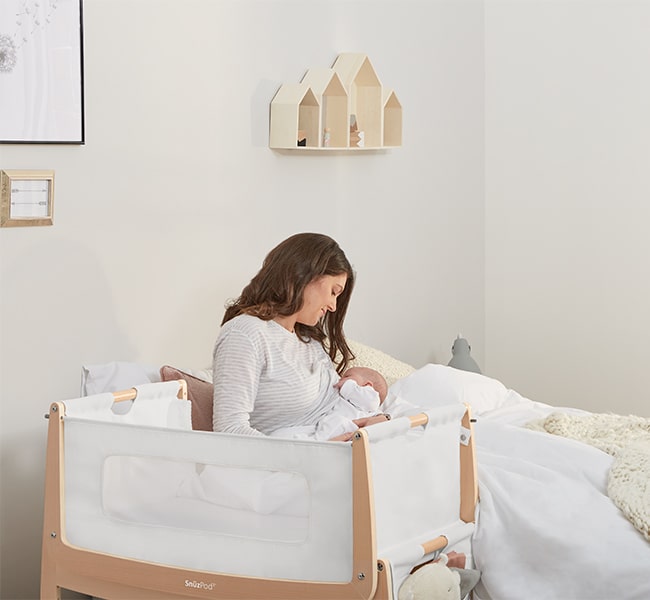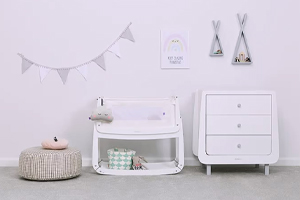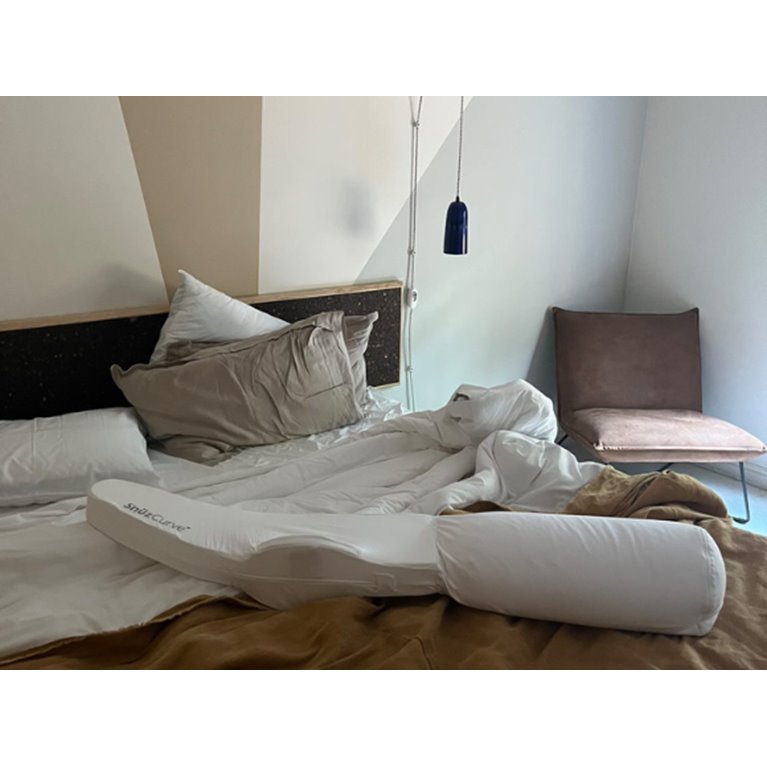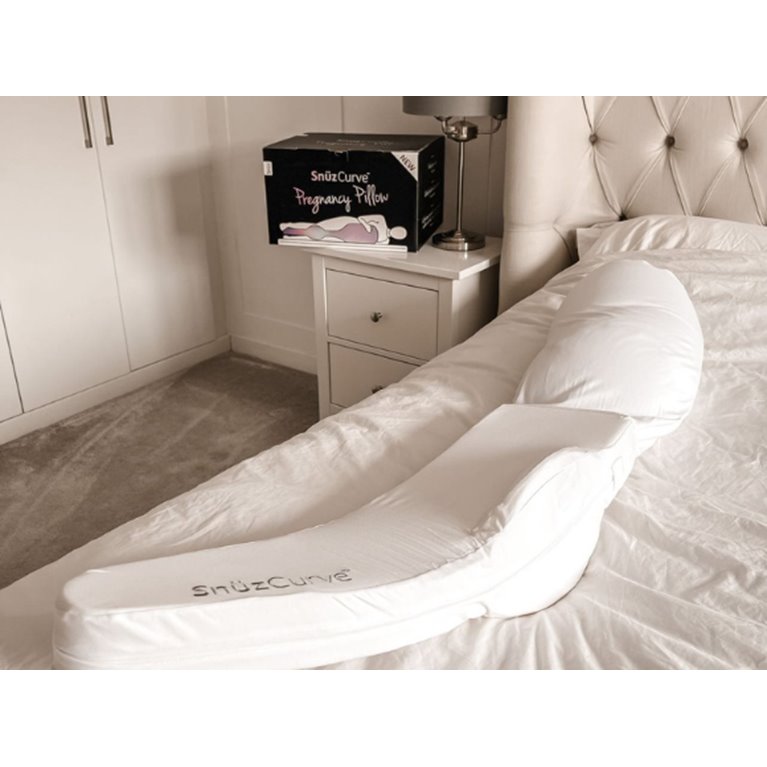How to Blackout Your Baby’s Room & Why It Helps Them Sleep Better
Getting an uninterrupted night's sleep might seem like a far-off fantasy for you as a new parent, but there are some things you can do to encourage your little one to sleep longer and more restfully to make your parenting life a little bit easier. One of those things? Blacking out your baby’s room.
By dimming the light that comes into your baby’s room at the first break of dawn and blocking lights from the hallways creeping in under the door, you can help your little one sleep more soundly and for longer stretches.
Babies are sensitive to changes in their environment, and unwelcome light in their room can easily disrupt their sleep.
The key is to create a calming and peaceful environment that encourages them to stay asleep as long as possible, including blacking out their bedroom.

Understanding Sleep Science in Infants
Understanding infant sleep patterns is a captivating area of study in psychology and sleep science. While adults experience cycles of light and deep sleep, babies spend more time in rapid eye movement (REM) sleep, which plays a vital role in their intense cognitive development during their early years.
Creating a dark sleep environment is beneficial for infants as it promotes the production of melatonin, a hormone that regulates sleep-wake cycles. When the room is dim, babies naturally associate it with sleep, so they know that it’s time to doze off. It also helps them distinguish between day and night, establishing a regular sleep schedule.


The Impact of Light Pollution on Sleep Cycles
So, if babies associate darkness with sleep time, it makes sense that light pollution will make them think it’s time to wake up.
Babies, with their underdeveloped circadian rhythms, are particularly sensitive to light, so exposure to artificial or natural light during their scheduled sleep time will disrupt their sleep patterns.
Circadian rhythm: an internal body clock that regulates the sleep-wake cycle.
This light can cause them to wake up earlier than they should during their planned nap or sleep and can become a habit if the light source isn’t removed from their sleep environment.
To promote healthier and more restful sleep for your baby, it's crucial to create a dark and 'blackout' environment.
| Contribute to an increased production of melatonin | This helps to induce sleep and maintain a steady sleep cycle, which is crucial to your baby's overall development and health |
| Limit distractions caused by external light sources | Babies are highly sensitive to visual stimuli, so a darker room can help them settle and sleep without disruption |
| Enhance the quality of sleep | Contributes to better cognitive function, physical growth, and emotional development in infants |
| Better and more sleep for you | If your little one is sleeping longer, then so are you! |


How to Blackout Your Baby’s Room
The main goal of blacking out your baby’s room is to limit the amount of external light entering the space, providing an atmosphere conducive to sleep. With a focus on this principle and a bit of creativity, you can easily transform your baby's nursery into a sleep-inducing sanctuary.
Here are our top suggestions for how to darken windows in the baby's room.

1) Install a Blackout Blind or Curtains
Installing blackout blinds or curtains in your baby's nursery should be one of the first things you do, and they can dramatically improve your little one's sleep quality.
These window treatments effectively block out any external light, creating a darkened environment conducive to sleep. With fewer visual stimuli to disturb them, your baby can settle more easily and maintain a more consistent sleep cycle.
How to install blackout blinds* in your baby’s nursery:
Step 1) Measure the width and height of the window to determine the size of the blinds needed.
Step 2) Select blinds that fit your window measurements and match your room's decor.
Step 3) Typically includes a screwdriver, drill, pencil, level, and possibly a ladder.
Step 4) Use a pencil to mark where the brackets will be installed. Use a level to ensure they are even.
Step 5) Drill holes where you've marked, then screw the brackets securely into place.
Step 6) Carefully place the blinds into the installed brackets according to the manufacturer's instructions.
Step 7) Gently pull down on the blinds to ensure they are secure and operate smoothly.
Step 8) If the blinds aren't level or don't fit properly, adjust the brackets or trim the blinds as needed.
* always check and follow the manufacturer’s instructions.
By creating an optimal sleep environment with blackout blinds or curtains, you're investing in your baby's health and development, promoting more restful and rejuvenating sleep.

3) Install a Pelmet
A pelmet serves an essential role in blocking light that may seep into your baby's nursery around the edges of curtains or blinds. It's a box fitted over the top of a window, typically matching the window treatment, and effectively seals the gap between the curtain rod or blind headrail and the wall.
This prevents external light from slipping in via the top of the window treatment, which is a common problem with standard curtains and blinds.

4) Make Use of Window Tints & Films
Window tints and films offer another effective solution for controlling the amount of light entering your baby's nursery. These thin sheets of material are applied directly to window glass, reducing glare and controlling light transmission.
Some window films will also help keep the heat in if you have single-glazed windows. Maintaining the temperature of your baby’s nursery is another really important factor in encouraging better sleep – babies can’t regulate their own temperature, so you need to make sure they’re warm enough.
“Babies do not need hot rooms. All-night heating is rarely necessary. Keep the room at a temperature that's comfortable – about 16 to 20C is ideal.” – NHS

5) Consider Using Draft Excluders to Block Light from the Door
Light can also come in from underneath the door into your baby’s room, particularly during daytime naps. You can help to block out this light by placing draft excluders along the bottom of the door (not inside your baby’s room, but on the other side of the door).

| Safety Consideration | Tips/Actions for Safety |
|---|---|
| Cords attached to blinds | Choose blinds with a cordless mechanism or those with concealed cords for child safety. |
| Proper installation | Ensure secure installation, and consider professional help for correct setup. |
| Regular maintenance | Regularly check for loose parts or damage and repair or replace as necessary. |
| Childproof accessories | Add cord cleats and tension devices to secure dangling cords and chains. |
Just remember, while creating the perfect sleep environment for your baby is crucial, their safety should always be the top priority. By bearing these considerations in mind, you can offer your child the ideal blackout conditions for healthy sleep without compromising their safety.

Create the Ideal Sleep Space With Snüz
Proper sleep underpins every aspect of your baby's growth and development. By creating the perfect blackout environment, you're setting the stage for better, more restful sleep for your little one. It may require a bit of effort and creativity, but the rewards — healthier sleep patterns, improved cognitive function, and a happier baby — are well worth it.
Start creating your baby's ideal sleep environment today with nursery solutions from Snüz.
For more nursery and baby tips, check out our blog!
Faqs
Yes, blacking out a baby's room can be hugely beneficial. It can help increase melatonin production, the sleep hormone, reduce distractions from external light sources, and improve the quality of sleep. Additionally, it supports the establishment of healthy sleep patterns. However, safety should always be a priority, so be waring of any cords that might come with blackout blinds or curtain ties.
A baby's room should ideally be dark enough to mimic night-time conditions, even during day naps. However, the room should not be so dark that you can't check on your baby's safety. Using adjustable blackout blinds allows you to control the degree of darkness to suit different times and your baby's comfort level.
Yes, you should darken the room when you put your baby down for a nap during the day. If you try to settle them down while it’s bright, you’ll probably find they won’t drift off at all. Roll down the blinds, draw the curtains, and switch off any overhead lights.
Yes, blackout shades or blinds are an excellent addition to your little one’s nursery, and you’ll be glad you made the investment. They’ll help you to darken the room for daytime naps and exclude any light that creeps into the room during the night, promoting better quality sleep for your baby.
Some blackout blinds will also help to keep out the cold that might come in through the window, leading to better room temperature regulation.





















